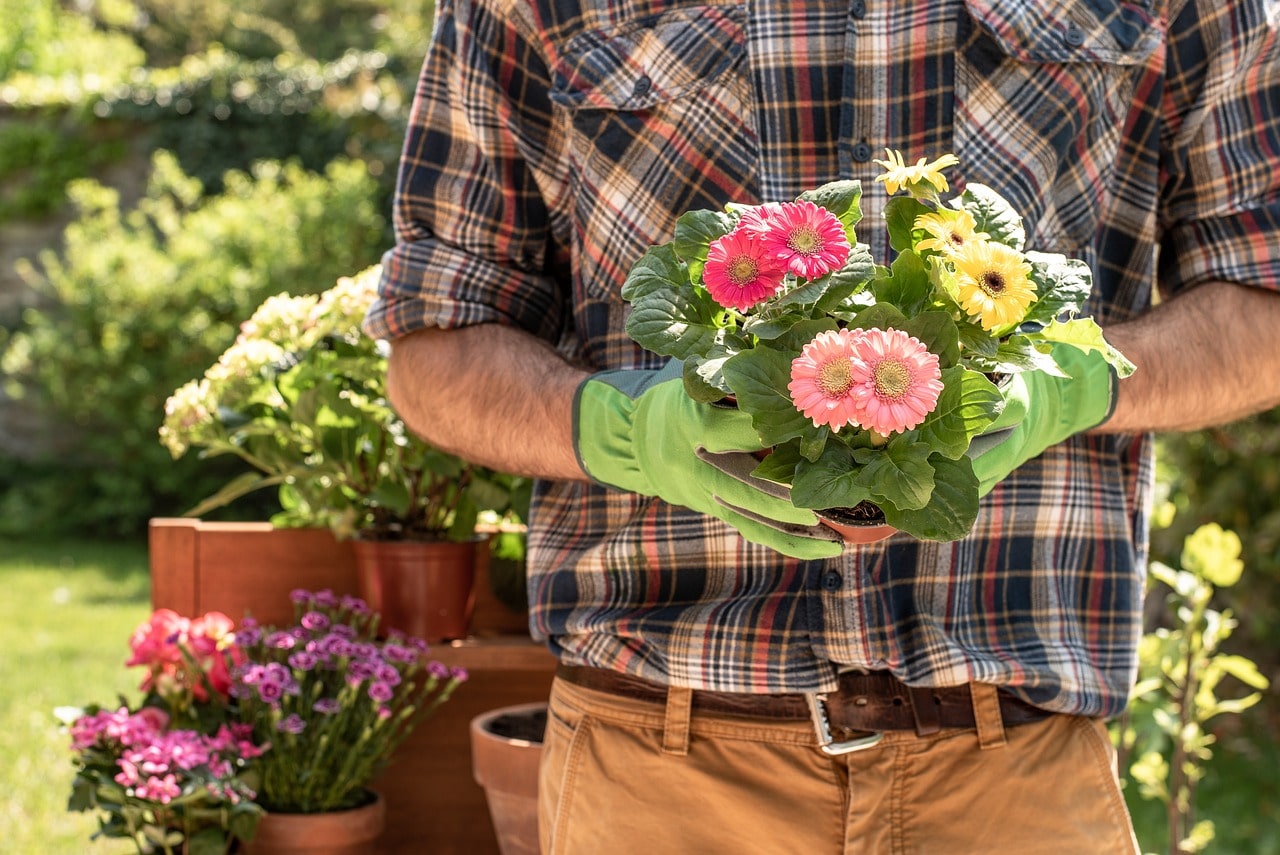When you’re starting out as a prepper, it can get overwhelming quickly as you begin to take stock of everything that has to be done to ensure you and your family’s survival. From basic decisions to purchases and action-oriented tasks, it takes time, money and strategic thinking to succeed.
First of all, know that getting started is a first step that most people sadly never take. So you’re already farther ahead than most. And this isn’t something you have to stress out about and have done in a day.
Survival prepping is a long haul effort, where you’ll be gaining ground with every task you accomplish. It’s something you can do on your own, or as a family, and in fact, it’s wise to include others so they know how to handle things in any event.
Below, you’ll find fifty tasks to get you started in your journey of survival prepping. You can do one per day, or as you find time. The key is to learn what needs to be done and begin making progress so that if and when a SHTF event occurs, you won’t have to panic – because you’re well-prepared.
Task #1: Start a Survival Supply Journal to Track Your Stock
Keeping track of your supplies will be one of the most fundamental tasks you’ll need to carry out. This prevents you from letting supplies go to waste or spoil, but it also ensures you don’t overbuy in one area, while underbuying in another.
You don’t want to use an electronic spreadsheet for this task. If the grid goes down, you’ll need to have a manual journal or tracker you can refer to. You can buy a digital printable one or order some sort of book designed for tracking supplies.
Be sure to mark down the item, size, number of items you have in stock, and the date they must be used by. Keep in mind that everyone needs to update the journal if they use some of the supplies or throw them out as expired.
Task #2: Get a 72-Hour Bug Out Bag Packed for Each Family Member
At the very least, everyone in your family needs to have enough supplies to last them for three days. A 72-hour bug out bag is perfect for taking on the run in the event you have to escape your home to go elsewhere.
It should have enough food, water, clothing and medical supplies to last at least this long. You may be able to add shelter onto the bug out bag, but make sure everyone has something for warmth at night if sleeping outside.
A bug out bag needs to be camouflaged and fitted to the size of the person carrying it. You don’t want to get a seven year old child the same sized bug out bag as an adult, because they won’t be able to carry it.
Task #3: Carve Out a Safe Space for Your Supplies
In your home or somewhere nearby, you want a cool dry place to store your food supplies. You don’t want a hot environment like an outdoor shed where food will spoil faster.
You’ll also need room in your home for other supplies you can access, like first aid, water, camping gear and more. This is a great time to do some Spring cleaning and get rid of stuff you no longer use or want to free up space for must-have equipment.
Task #4: Begin Stocking Up on Long-Term Water Supplies
Long-term water supplies can be a mix of things. For example, you might often have individual, plastic water bottles on hand. But for the long haul, you’ll want things like rain barrels to capture water months down the road.
You will want survival water straws that you can stick into any body of water and drink directly from safely. You want water purification tablets, too. You can find things like water bladders that fill an entire bathtub, and color-safe water containers that hold seven gallons of water, that you can stack up in a cool, dry place.
Task #5: Make a List of Shelf Stable Foods You Can Start Buying
Every time you go to the store, you want to begin adding a few items here and there that will eventually make for a wonderful survival supply. Things like rice, beans, sugar, flour, salt, spices, coffee, hard candy and more are great for addressing the nutritional needs and wants of your family.
Canned good are okay, too – but they’re not going to last as long as some other foods. You’ll want to purchase items your family currently enjoys, so that you can rotate the stock as you use them.
Whenever something gets near to the expiration date, use it in a family meal and replace it with a product that has a longer expiration date. You’ll want to make sure your food is stores safely from pests and any other hazard – and don’t forget to stock up for your pets, too!
Task #6: Order Extra Prescriptions You May Need
Before you get too far into your survival prepping efforts, take note of any prescriptions your family has – whether it’s contacts, allergy medicines, blood pressure pills and more – and see if you can stock upon the prescription in case a SHTF event takes place and pharmacies are inaccessible.
Task #7: Get a Hand Crank Radio That Keeps You Informed
A hand crank radio (which can also be battery operated) is a great tool to have on hand in case of a major survival event. You may not be able to log onto the Internet or turn on the TV to find out what’s happened or what you need to do.
Emergency services will be broadcasting on the radio and you can access that with a solar powered, battery operated or hand crank radio. The hand crank option ensures you’ll always have the ability to tune in, while solar and battery options may not be available 100% of the time.
Task #8: Make a Plan for Cooking without Power
If you were to lose power today and not have it again indefinitely, how would you cook each night? You need ways to start a fire – to boil, and fry, grill and bake food for your family.
You need fire starter equipment as well as gear that can handle outdoor cooking. You might use a grill, but that requires you to have charcoal or wood to put in it. You’ll need flint and matches, and more.
Task #9: Invest in a Sturdy Survival Knife for Multi-Purposes
When you’re having to live in a survival situations, you’ll find that a knife comes in handy for many reasons. From skinning animals that you’ve killed for meat to whittling wood and even as a defense mechanism, knives are an important tool.
You might need it for helping you build a shelter or even for first aid purposes. Make sure you have access to a multi-knife tool or a variety of knives that can help you survive in any situation.
Know the different between a fixed blade and a folding blade. Have a way to sharpen your knives, too. If the survival event lasts a long time, the knives will become dull and useless over time.
Task #10: See How You Can Fortify Your Home from Intruders
Some survival events will mean your home becomes a target by unsavory individuals, Whether it’s a short-term civil unrest situation or a long-term survival event where intruders are trying to access your home to steal your supplies, you want to ensure that they can’t get in.
Start by checking the durability and sturdiness of each door and window in your home. You want strong locking mechanisms on them. If you have any weak entry points, replace them with something made of stronger materials.
While things like a Ring camera might come in handy in a short-term event, you may lose electricity, so it would be useless in a SHTF situation that lasts awhile. Make sure you have a way to check to see who’s on your property (like a peep hole) before you open the door to anyone.
Task #11: Join an Online or Offline Prepper Community
Prepper communities are great for keeping you informed about upcoming possible events as well as teaching you things you may not know about survival prepping. There are many people who join these communities and have plans (based on their camaraderie) to build homestead communities near one another.
Make sure you use a pen name on the forum or in person and never give out your location or specifics. Every time you share information with others, it puts you at risk for having your supplies stolen.
Task #12: Get the Supplies Ready to Seal Up Your Home
There are some events where you’ll want to seal up your home more than just locking it properly. Even the best weather seal might let something in. In the event of a nuclear fallout, you want to have your windows and doors sealed quickly to prevent anything from getting in.
Task #13: Prepare for Cold Weather to Keep Your Family Warm
Cold weather events can be treacherous, even if you’re inside your home. If you lose power and it’s freezing outside, it will soon drop to the same temperature indoors. You want to have things like a tent, warm blankets or sleeping bags, and other ways to keep you and your family warm if this happens.
Make sure you have a safe way to warm up food inside, even if it means using MREs (meals ready to eat) with heating elements inside of them. You’ll be amazed at how comforting warm food can be in a cold weather event.
Task #14: Set Aside Cash for a No Power Event
If the grid goes down, not only will ATMs not work, but you won’t be able to walk into a grocery store and charge supplies onto your debit or credit card. Many places will be cash only establishments from that point on, and most people rarely carry cash anymore.
Make sure you have enough on hand to help you secure what you need in the immediate moments of a major disaster. Supplies will go fast, and you don’t want to have to wait for any banking options to get what you need.
Task #15: Go Over an Escape Plan with Your Loved Ones
There will be situations where you can’t stay at your home. You may not be with or near your family when this happens. So everyone needs to know what to do in the event that they can’t stay or return to your current home.
Have a place to meet up, and make sure there is more than one option given, depending on the circumstances. For example, if the city is under attack, fleeing to a nearby wilderness may not be an option if it’s caught fire.
Make sure everyone knows how to get from point A to point B without staying along the main roadways, too. These may be compromised or have people who aren’t safe to be around.
Task #16: Pinpoint the Whereabouts of Natural Water Sources Nearby
Before the power is down, go to Google Maps and do a visual search for natural water sources near your home, within walking distance. These could be rivers, lakes, streams, and more.
When and if the power goes down, your water may not work – or if it works, it may not be safe to drink. If there’s no water, you want to know exactly where to go to access water that you can purify. Print out the birds-eye view so you’ll remember.
Task #17: Consider Keeping Animals for Survival Purposes
Animals can be a handy resource in the event of a survival situation. Some people don’t like the idea of butchering an animal, but you don’t even need to do that if you don’t want to.
You can keep hens to lay eggs, use various animals for milk, use them for wool if you need blankets or clothing, and more. Of course, if you did end up needing to use them as food, you could if the alternative meant starving to death.
Task #18: Look at the Solar Survival Gadgets Available and Save Up for One
There are many solar gadgets for survival that you want to consider investing in. Some, you might even be able to make yourself – such as a solar cooker. They have readymade ones, too.
You can also find solar powered generators, solar phone chargers, solar lights and more. These may cost a little more upfront, but you won’t need electricity or batteries to use them from this point on, so they’ll pay for themselves in the long run.
Task #19: Make Sure Every Member of Your Family Can Be Armed
You have to check the laws in your state or country, but in many areas, you can purchase and teach your children how to safely and carefully use firearms. Many kids in states like Texas are raised this way.
Gun safety is paramount to carrying out this task. Without it, the potential for a catastrophe is heightened. Begin purchasing firearms, ammunition and a large safe to store this gear.
Task #20: Get Every Loved One a Paracord Bracelet
A paracord is a survival bracelet that can come in handy for a multitude of reasons in a survival situation. From helping you erect a shelter to assisting you with food, these are a tool every man, woman and child should have at their disposal.
Task #21: Purchase Used or New First Aid Books and Start Learning
There are many first aid books that will teach you how to do everything from dealing with minor scrapes and bruises or a headache to setting a broken bone or performing CPR.
You can buy first aid books to have on hand so that you can not only start learning them yourself, but teaching your loved ones. You don’t want to have to take a book with you or stop and learn on the go.
Look at used book stores, or purchase new ones and make a plan to start going through the lessons page-by-page. Have each family member practice the steps of applying first aid in certain situations, and if you find that you don’t have a needed supply, put it on your list to get.
Task #22: Make a Survival Garden Plan for Your Current Space
Growing your own food is an important task that everyone should do. Whether you live in a cramped apartment and only have a balcony for a container garden, or you have an acre or more of land to grow on – start the planning and planting process.
Grow foods that are rich in nutrients and calories, whenever possible. You want foods that grow fast (such as radishes that only take three weeks) and those that will deliver a lot of results, such as potatoes.
Task #23: Learn How to Can Your Own Food
Canning food is a skill that people used to pass down from one generation to another but it’s become somewhat of a lost art now among the masses. If you’re growing your own food, it will help to be able to can your fruits and vegetables for later use.
Task #24: Teach Survival Stealth and Self-Defense Measures to Your Family
Being stealth during a survival event can help keep you alive You have to teach your family how to stay quiet, how to move without being detected, how to not draw attention to yourself, and other stealth measures.
You also can’t be unprepared if the worst-case-scenario takes place and someone or something attacks you or your family. Be knowledgeable about and prepared for attacks by wild animals as well as individuals, even if it means enrolling everyone in a self defense course.
Task #25: Start Stocking Up on Personal Hygiene and Toiletries
As we witnessed at the start of the pandemic, the strangest things can go early. While you may have thought food and water would fly off the shelves first, it was toilet paper that was sold out in stores across the globe.
Make sure you don’t neglect the toiletries your family needs and uses when you’re planning your survival supplies. From contact solution to deodorant, toothbrushes and toothpaste – and more – it’s all going to be sold out if a major event occurs.
Task #26: Identify Natural Food Sources in Your Area
You can hire a guide or find this out yourself, but you want to start looking into the naturally occurring foods you can forage off the land in your local area. This may include plants you can eat, berries that are safe, nuts and more.
It’s also important that you learn and teach your family what is unsafe to consume. There might be berries that smell wonderful, and look delicious, but are poisonous when eaten.
Task #27: Have a Supply of Non Electric Entertainment Options
People often get so focused on their life or death needs that they forget there will be tons of down time in a survival event. There will be no access to video game consoles or smart phone games.
Your kids (and yourself) will need to have things like cards and board games, jump ropes and outdoor play equipment to have fun with. Make sure you have books everyone enjoys, too.
Task #28: Consider Investing in Educational Resources for Kids
When the pandemic hit, schools came to a grinding halt until they were able to scramble and find a way to get everyone online. But in a major survival event, you may not have access to online education.
If you have children who are school aged, make sure you have some sort of learning tools you can use to continue their education and make sure they don’t fall behind on important skills like math, reading and more.
Task #29: Teach Your Family the Importance of Survival Silence
Silence can save your life in a survival situation. Whether you’re bugging out in the wilderness or trying to get home safely from work during a civil unrest situation, you have to teach your family how to be quiet when it counts.
There’s more to it than just being quiet around strangers, too. You can’t have your kids bragging to their friends about your enormous survival supplies because they’re bound to put a target on you when the SHTF and there are no supplies to be found anywhere.
Task #30: Consider Your Outdoor Shelter Options
There may be times when you can’t stay home, but have to leave and live outdoors for a time. If you have a tent to camp in, or a camper, that’d great. But not everyone will have access to that all the time.
You need to be able to make a shelter out of simple things like a tarp and rope – or even from sticks, mud and other supplies you can find in the outdoor landscape. Teach yourself how to build shelter from the land, and pass that knowledge on to your kids.
Task #31: Buy a Compass and Land Map for Each Person
Being able to navigate by land is an important skill to help you and your family get around safely and find resources that you may need. We have become so reliant on apps and automated GPS, but that may not help you in a survival event.
Invest in a small compass for each individual and buy land maps that you can use to find out which direction you’re going. Have everyone in the family practice leading each other from one place to another via the compass and map.
Task #32: Have Lighting Options for Nights with No Power
When the grid is down, it gets extremely dark at night. There is no more light pollution that can illuminate the nearby surroundings, and there’s only moonlight on clear nights. So you want to have a way to light up your room when necessary.
You can use kerosene lamps like they did in the old days or use the pop up solar lights that are made for indoor or outdoor use. Keep in mind that people outside your home will know there are people there if they see a light, so be cautious about when to use it.
Task #33: Start Accumulating Different Ways to Travel
If you need to go to an area where walking would take too long or isn’t feasible, you may want to have multiple forms of travel options. You might not be able to simply jump in the car and take a highway to where you need to go.
You might want to have a vehicle that’s good for off-roading, like a truck or sturdy SUV. You can also have motorcycles and 4-wheelers, bicycles and even horses to get around on.
And don’t forget travel by water, too. You might be able to use a kayak, boat, canoe or other means of transportation to get around. If you can afford it, invest in a camper and trailer to help you bug out if needed.
Task #34: Make Sure You Have Good Hand Tools
You might be used to plugging in a drill at home or using battery operated or electric outdoor tools. But if the grid goes down, these will be useless. You want to make sure you have hand tools – pliers, wrenches, screwdrivers and more. Don’t forget bigger tools like saws in case you need to cut down a tree or build a shelter.
Task #35: Check to See If Everyone Has Ample Survival Clothing
Survival clothing is something every person needs to weather a long-term or even a short-term event. The clothes should protect you from cold and blistering sun and even offer some protection from insect bites, too.
Make sure the clothing is purchased for layers. That way, in case you start out cold in the early morning, but end up hot by late afternoon, you can remove layers to stay comfortable.
Invest in clothes that offer protection from the elements, like a jacket that not only provides warmth, but protection from rain, too. Make sure they’re durable and waterproof and camouflaged to reduce the chances you’ll be seen.
Task #36: Print and Laminate Instructions You May Need
Anything you need to know but may not have a book about (or need to pack in a bug out bag), make sure you print it now and laminate the pages to prevent weathering or damage.
This might include instructions on how to cook certain things like beans or how to make bread from scratch. Even if you know how to do these things, your family may not, and in a worst-case scenario where they lose you, you’ll want them to have these instructions.
Task #37: Start Investing in Long Shelf Life Survival Foods
It’s always wise to pick up some extra groceries to stock away for survival reasons, like an extra bag of flour or sugar. But you also want to begin investing in some 25 and 30-year survival foods.
There are buckets of survival food you can buy that last one person an entire month – a 30-day supply. All you have to do is add water and heat them up. There are also MREs you can buy that are military grade.
You can buy 72-hour kits and 1-week kits as well. You can buy these kits where they include a main meal, side items, dessert and drink. But you can also buy individual items, like a can of dried whole egg powder that will last you 10 years.
Task #38: Prepare for Old Time Methods of Cleaning
Borrow the knowledge from your ancestors and learn how to do everything on your own. That includes making your own disinfectant and cleaning materials and using them without the luxury of a dishwasher or laundry machines.
You want to know how to make and use soap, have bleach on hand and use a laundry board with a bucket of water. Make sure you have a cable strung up to dry your laundry, too.
Task #39: Get Familiar with Cast Iron Cooking Over an Open Flame
Cast iron pots and pans are a great investment that can be passed down to your offspring. Taken care of, they will last a lifetime, and they’re perfect for cooking food over an open flame.
These aren’t the best for bugging out on foot, because they weigh a lot. But if you’re building a homestead or want to put some in a camping trailer, they’ll be perfect for when you have to cook without power.
Task #40: Start Shopping for Survival Supplies Strategically
Part of being a good prepper is learning how to shop smart. That means looking for sales on important items. You might find certain things like cold weather gear being slashed in price once the weather starts warming up, making it a perfect time to buy.
You also want to start buying in bulk to save money whenever possible. Look for brand and store coupons you can use to get more of what you want for free – or for a fraction of the price.
Don’t feel like everything you get has to be brand name, either. You may use a brand name food in your daily life, but when you stock up on survival food, knock off brands are just as good if they have the same shelf life.
Task #41: Consider Stocking Up on Items You Can Use to Barter
Not everything is purchased for your personal use. You might stumble upon a great sale for something you never use, like cigarettes. During a survival event, when smokers are desperately looking for them and can’t find them, you might be able to trade or barter with them as your currency.
This goes for any kind of luxury items – alcohol, chocolate, or even toilet paper! You want to make sure you have everything you need first, but you also want to keep an eye out for things you may not need, but would be a great in-demand item in a SHTF situation.
Task #42: Begin a Family Plan of Fitness and Health for Survival
Having supplies and knowing how to use them is half the battle. In a survival situation, your body will be put through the ringer. Whether you’re walking a lot, defending your property, chopping down wood for a fire – or something else, you need to be fit and healthy.
Don’t make it an unpleasant experience, but start some goals for each family member to improve their fitness and be able to survive with ease. For example, take the family on a hike and see how everyone fares before setting improvement goals.
Task #43: Start Learning Craftsmanship for Construction and Repairs
When society is broken for a long time, you can’t just call a mechanic, roofer or plumber. You have to fix things or build them yourself. So you have to be skilled at this in order to be able to confidently do it yourself.
You can watch YouTube videos or buy books, even study as an apprentice with someone to learn the ropes. Think about the skills you may need most and then little by little, learn them and pass the knowledge on to your loved ones.
Task #44: Learn How to Hunt for Food
If you’re starving and can’t forage enough berries, plants and nuts, you may have to become a hunter instead. This can range from fishing to trapping and preparing small to large prey.
You’ll want to learn how to fish without a fishing pole and bait. You want to learn how to set traps, kill or skin an animal and properly prepare it to feed your family. You might be using a rifle and ammo, a knife, bow and arrow or your bare hands, so prepare for everything to help you stay alive.
Task #45: Teach Your Family How to Tie Knots and Use Ropes
Ropes come in very handy in a survival situation. You can use it to drag things from one place to another. You can leverage it to help build shelters, you can trap things in it and more.
Make sure you invest in a variety of ropes and learn how to tie knots in them. Test the strength of the knots and also practice undoing the knots, too – which can also come in handy.
Task #46: Take Your Family on Practice Survival Runs
Nothing prepares you more for a survival event than practicing. When something really does happen, most people will be in panic mode. They often forget what they need to do.
But practicing things makes them come naturally. So take your family campaign and practice bugging out without the usual luxuries in life. Have everyone learn to start a fire and cook for themselves.
Do the same indoors, too. Turn off all electricity for an entire 24 hours and make everyone learn how to survive boredom, how to make sure the house is secure, how to eat during this time, and so on.
Task #47: Look for Signals That an Event Is on the Horizon
Staying abreast of the news and events in the world can help you be prepared long before others are. For example, when citizens on one side of the globe began chatting about toilet paper shortages, some in the states had been watching, and were able to be prepared early on instead of trying to do last minute hoarding.
The signals you want to watch for can include weather events, supply shortages, and even something as severe as war. Don’t just listen to main stream media, either. Watch for chatter on social media and in forums, as well.
Task #48: Ensure You’re Planning for Stress-Relief When Needed
Not only can a survival situation take a physical toll, but it takes a mental toll on everyone – young and old alike. Even if there’s not a severe, immediate threat, the constant worry about something worse happening may be enough to cause sadness, anger or depression.
Everything from worry about food to lack of socialization – health issues and more – can impede someone’s ability to relax, regroup and maintain a positive mindset. So make sure you have supplies for relaxation and recovery as well as a plan to help everyone have a positive outlook.
Task #49: Make a Specific Prepper Budget and Start Buying on a Regular Basis
As you begin carrying out the tasks listed above, you start to get a better grasp on how much things cost, how to shop smart, and what items you most need for the comfort and survival of your family.
Now, you can create a budget for your ongoing purchases as well as big ticket items you want to have. This may include a homestead property, tornado shelter or panic room, camper and more.
Start a savings for the big ticket purchases and begin funneling in small amounts as you can. Look for ways to pay off debt and put those minimum payments toward your bigger survival purchases.
Task #50: Start Looking at Specific Homestead Property
If you’ve been prepping at home this whole time, in the suburbs or urban areas, you want to make long-term plans to have an official off-the-grid homestead out in the country – in the middle of nowhere – so that you’re safe from the chaos of an unruly crowd.
This spot should ideally have its own water source, like a river, stream or lake. You want plenty of land for raising animals and planting crops. You can build using a variety of supplies, such as an official second home level of luxury or something like a wooden cabin or shipping container survival home.
Start stocking the property with supplies of its own, so that you don’t have to try to transport the ones in your current home. And spend time on the property learning how to live on the land.
As you can see, there’s a lot that goes into preparing for a survival situation. From little things like having extra canned vegetables on hand to large decisions like where to build a homestead – you can go through them one by one, getting closer to your goals of self-sufficiency and preparedness.











